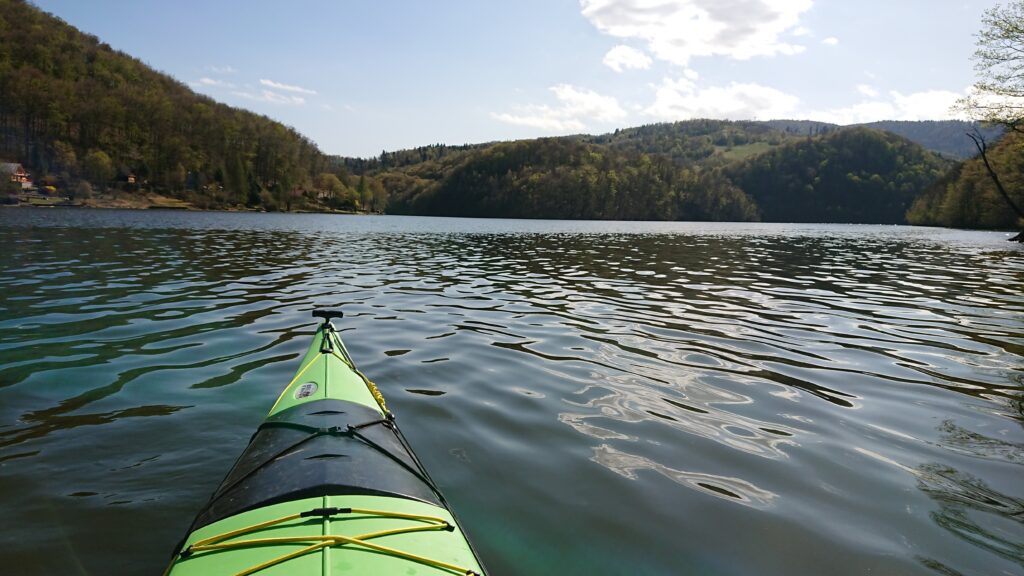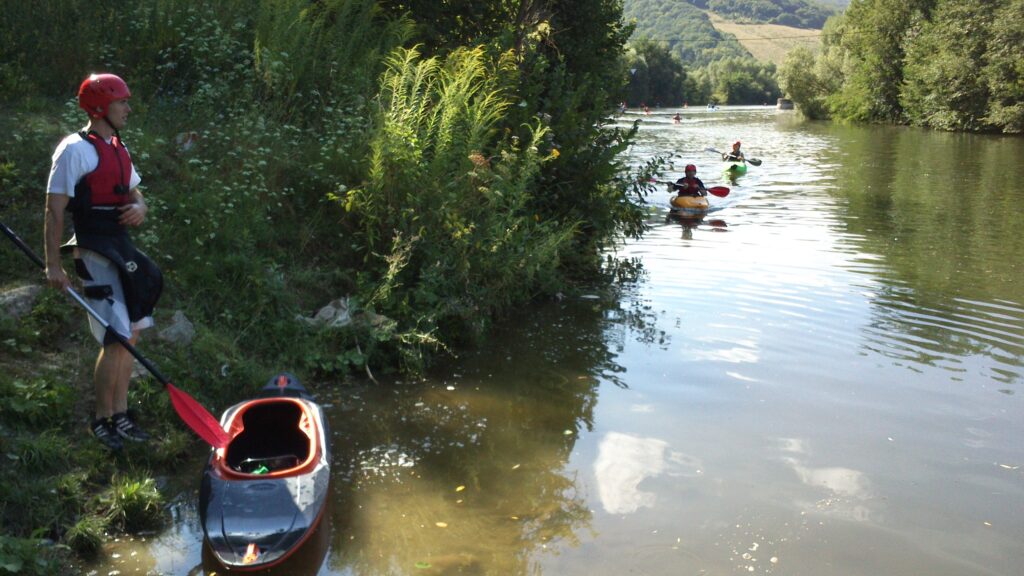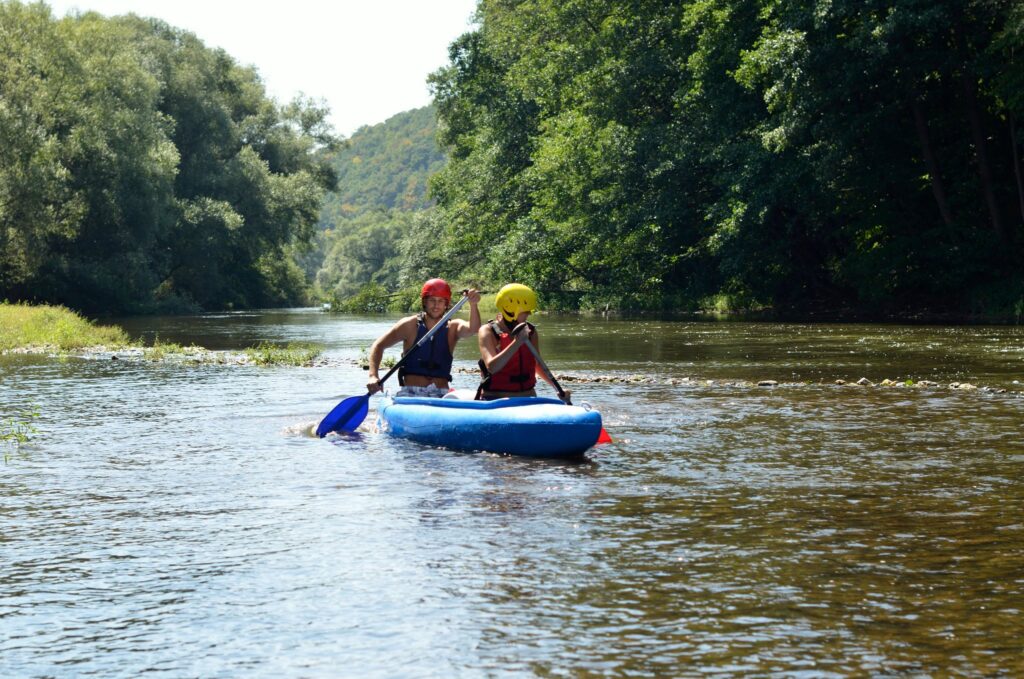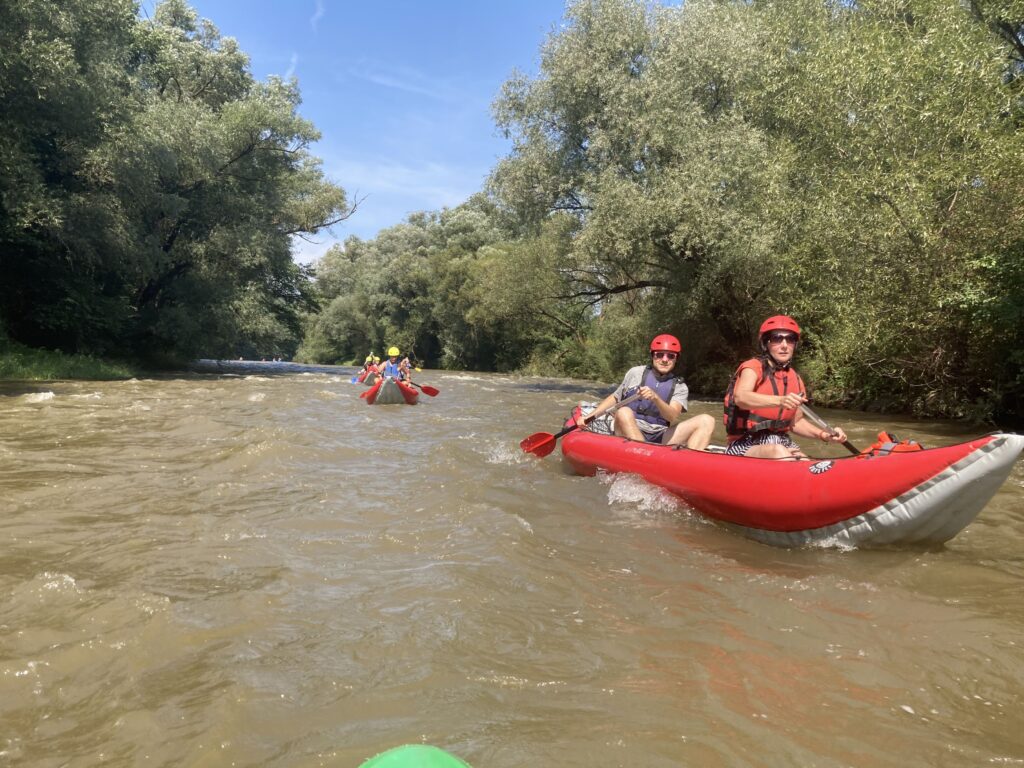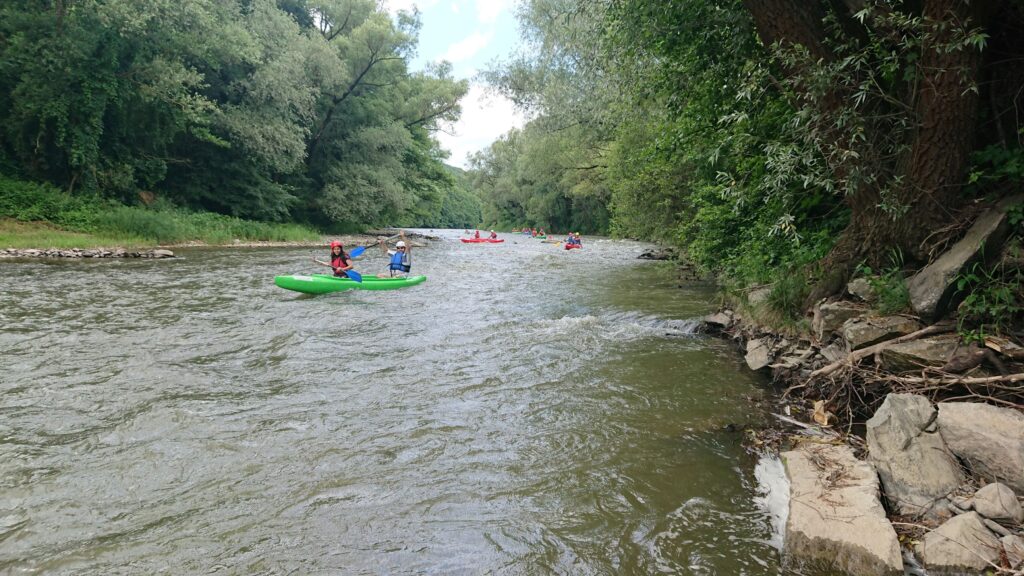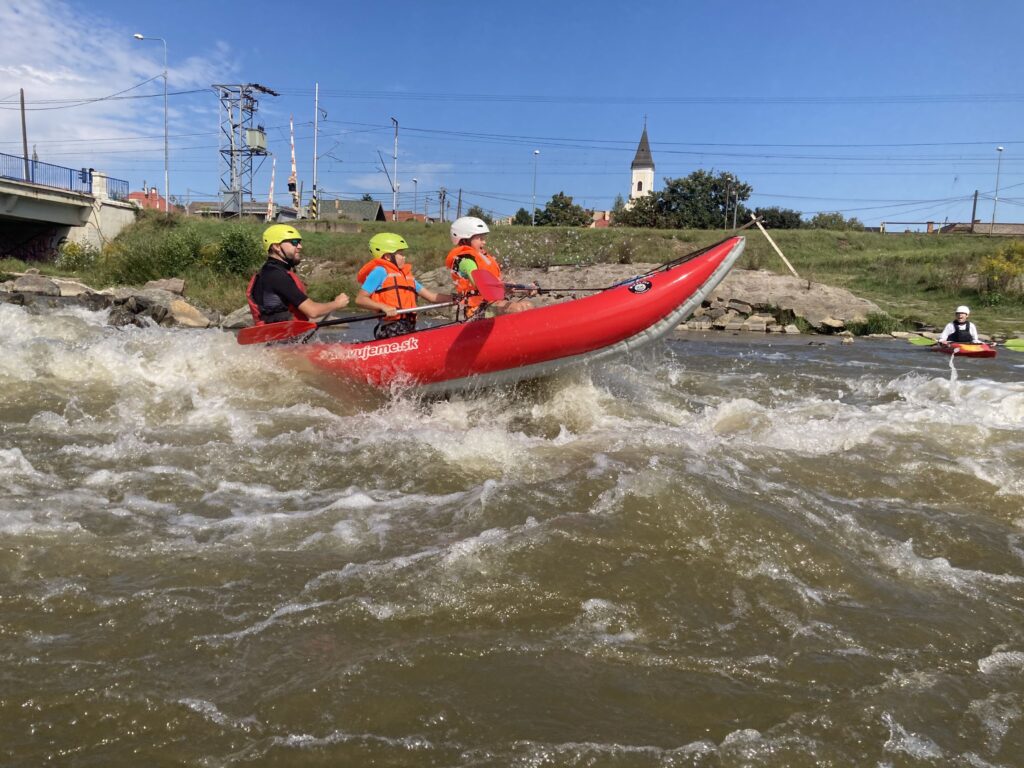The Hornad river
The Hornad River originates under Kráľová hoľa, near the village of Vikartovce. The Hornád River in Slovakia is 193 km long, with a total of 286 km from its source to the confluence with the Slaná (Sajó) River.
Approximately 145 km are navigable by canoe or kayak in Slovakia, and the entire section is navigable in Hungary.
Hornad Gorge
The canoeing of Hornád Gorge (or Canyon) can be started in Hrabušice – part called Mýto. It is 12 km to Čingov and the canoeing takes approximately 3-4 hours. After Hrdlo Hornádu, the river meanders in a narrow, overgrown bed, then flows through a canyon through the Slovak Paradise National Park. That is why canoeing here is only possible if strict rules are followed. At the same time, the section is difficult and the canoeing is therefore only suitable for experienced paddlers. It is possible to paddle on 1 and 2 seated kayaks and canoes. More information about Hornad Gorge canoeing https://www.npslovenskyraj.sk/splavovanie-prielomu-hornadu-v-np-slovensky-raj/
The middle part of Hornád
Below Čingov, the valley opens up, the river still flows briskly, it flows into Spišská Nova Ves city, where the river is regulated by several weirs and a small dam in Smižany. This middle section of Hornád ends in Margecany at the mouth of the Ružín dam, it can be sailed in 2-3 days.
Ružín
The Ružín Dam is a system of 2 water dams. The water here is completely still and suitable even for complete beginners.
Malá Lodina – Košice
The section between the Ružín dam and Košice is most often used for rafting and canoeing. The Hornád River is also suitable for beginners, although during the rafting you will also experience small rapids (waves) and stones or other obstacles in the current. There is a container for an automated boat rental in the village of Veľká Lodina, another container with kayaks is located in Kysak, and you can return the boat at the shipyard in Košice – on Anička.
In this section, the river flows under the Bokšov National Nature Reserve, the Jánošík Bastion, from which there are amazing views of the valley, in Trebejová there is the Trebejovská vlnka. You should pay attention to the small hydroelectric power plant in Kostoľany nad Hornádom, which needs to be moved.
In the Kostoľany nad Hornádom, you can try the pump track, see a renovated historic mill, or have a delicious Kostolian ice cream. You can also have refreshments in restaurants here or in the opposite Družstevna pri Hornád.
In the Košice, the adrenaline-pumping Ťahanovská wave awaits you – a bonus at the end of the paddling trip. No need to worry, just paddle and go in the middle of the river under the bridge. Even if you capsize, nothing happens, 150m below the wave there is a pier where the rafting ends.
Košice – do not paddle
There is an unnavigable small hydropower plant right at the Anička. The river is regulated in the city, there are several smaller or larger steps and hydroelectric power dams that are unnavigable. We therefore do not recommend paddling through the city. There are also several smaller weirs under the Košice, so we recommend starting rafting in the Ždana below the small hydroelectric power plant.
Part of the river under Košice
The water in the river flows noticeably slower here and there are only a few rapids (small waves). Inthe Ždana or the Trstene pri Hornáde, you can rent a kayak in an automated boat rental office. In Milhost, which is the last village on the Slovak side of Hornád, you can return the boat or continue to Hungary. The river meanders along the entire stretch. You are paddling through the NATURA 2000 area where you can see rare animals, especially different types of birds such as the peregrine falcon, brown woodpecker or long-tailed owl.
The Hernád in Hungary
After the Hornád follows the border between Slovakia and Hungary, it flows into Hungary near the village of Abaújvár. The river flows most of the time away from populated areas. In Hidasnémeti, there is the wildest section of the river in Hungary with rapids that sometimes surprise even experienced paddlers. There is also a boat return/rental container. Further on, the river flows slowly.
In the village of Viszoly you can visit the honey museum, in Gibárt there is a hydroelectric power plant built as early as 1903. In the village of Peré you can find accommodation in a camp or guesthouse near the river. Another campsite with wooden cabins can be found in the village of Nagykinizs. Near the village of Ónod, the river flows into Slana (Sajó).
